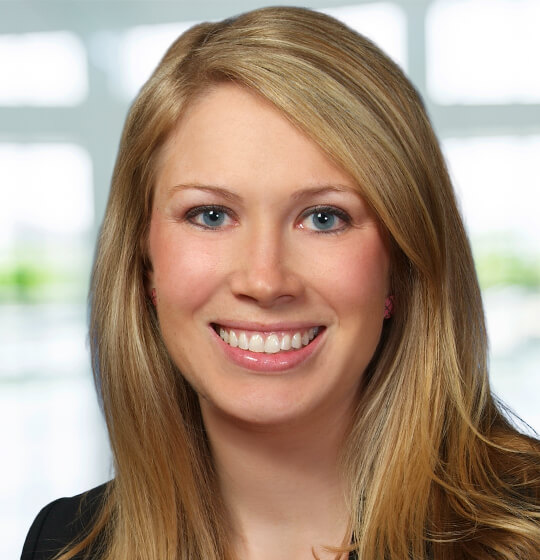Beginning on July 1, 2022, New Mexico’s Healthy Workplaces Act (HWA) requires private employers with even one employee working in New Mexico to provide paid sick leave (PSL) to eligible employees. The New Mexico Department of Workforce Solutions (DWS) recently published HWA guidance, in the form of answers to frequently asked questions (FAQs), and regulations to provide guidance and clarity on various issues as the effective date approaches, including the definition of “covered employees”; rules for accrual, use, and carryover of paid sick leave; frontloading; and employee documentation and employer notification requirements.
Covered Employees
The HWA covers employees performing work in New Mexico—regardless of the location of the employer’s business—including part-time, temporary, and seasonal employees.
With regard to remote workers, eligibility for PSL is determined on a case-by-case basis. For example, according to the DWS, telecommuters and remote workers who perform services within New Mexico, “and whose employers are incorporated, registered, based, physically located, or are conducting their stated business in New Mexico … are most likely covered.” (Emphasis in the original.) Telecommuters and remote workers who perform services remotely but do so while physically outside of New Mexico “are not covered regardless of whether their employers are based in New Mexico.” (Emphasis in original.)
Rules for Accrual, Use, and Carryover of PSL
As of July 1, 2022, employees start accruing PSL. Employers may not offset this requirement with any leave an employee has already used or earned since January 1, 2022. Employees may use PSL as soon as it is accrued; there is no waiting period for PSL use. General PSL accrual, use, and carryover requirements are as follows:
- Accrual rate: PSL accrues at a rate of one hour for every thirty hours worked. PSL will begin accruing for existing employees on July 1, 2022, or on the first day of employment for those hired after that date.
- Note that salaried exempt employees are presumed to work forty hours per workweek for purposes of PSL accrual, unless their normal workweek is fewer than forty hours, in which case PSL accrues based on their normal workweek.
- Maximum accrual: Accrual of PSL is unlimited. Employers may not cap an employee’s accrual of PSL.
- Maximum use: Employers may limit an employee’s use of PSL to sixty-four hours per twelve-month period.
- Carryover rules: Employers must allow employees to carry over at least sixty-four hours of unused leave from year to year.
- Use increments: Employees may use PSL in the smaller of hourly increments or the smallest increment the employer’s payroll system uses to account for absences or use of other time. Employees may use their available PSL consecutively or intermittently in small increments.
The result of these rules is that employees may have PSL balances of more hours than they will be allowed to use in a given year. The DWS recommends that employers notify employees of this potential differential between their balance and the actual availability of hours for the year.
Rules for Frontloading
Rather than using the accrual method, employers may prefer to advance (frontload) the full sixty-four hours of PSL to an employee at the start of each year. Beginning on July 1, 2022, according to the DWS, employers that wish to frontload PSL to comply with the HWA for the rest of 2022 must frontload the full sixty-four hours—“even though there will only be 6 months in the cycle for employers who choose to follow the calendar year.” Employers that choose to frontload PSL at the beginning of each subsequent year may want to keep in mind the following:
- Frontloading does not relieve an employer of carryover obligations. In other words, whether employers provide PSL through accrual or frontloading, they must allow at least sixty-four hours of unused leave to be carried over each year.
- Even if an employer frontloads the full sixty-four hours of PSL, the employer still must track an employee’s hours worked for purposes of PSL accrual because, as noted above, it is unlawful to cap the number of PSL hours an employee may accrue. Therefore, once an employee has worked enough hours in a year to have accrued the full sixty-four hours (this equates to 1,920 hours worked), the employee must begin accruing an additional hour of PSL for each thirty hours worked.
- Employers generally may not frontload less than sixty-four PSL hours, even for part-time employees. Employers may frontload less than sixty-four hours only for employees who begin working midyear (in which case they may frontload a prorated portion to be used in the remainder of the year).
- Employers may use different accrual structures for different categories of employees—for example, frontloading for salaried employees and accrual for part-time employees.
Single Paid Time off Policies
Employers using a single paid time off (PTO) policy that incorporates the requirements of the HWA do not need to provide additional PTO for employees who get sick after using all of their available PTO. The DWS’s FAQs remind employers, however, that “the PTO must be subject to the same usage, accrual, carryover and other requirements of the [HWA].”
The PSL required by the HWA is in addition to any PTO provided by an employer pursuant to a collective bargaining agreement, unless that PTO may be used for the same purposes and under the same terms and conditions as the HWA.
Qualifying Reasons for Leave
An employee may use PSL, upon oral or written request, for absences due to the following:
- Care of self: The employee’s own physical or mental illness, injury, or health condition, or to get a medical diagnosis, care, or treatment of an illness, injury, or condition, or for preventive medical care
- Care of a family member: The employee’s need to care for a family member’s physical or mental illness or injury, or health condition, or family member’s need for diagnosis, care, or treatment of an illness, injury, or health condition, or for preventive medical care
- School meetings: Meetings at the employee’s child’s school or place of care related to the child’s health or disability
- Safe leave: The employee’s need to address domestic abuse, sexual assault, or stalking suffered by the employee or a family member
The FAQs list the following examples of the types of events that would constitute qualifying reasons under the HWA (this list is nonexhaustive):
- Dental treatment
- Medical conditions related to pregnancy or childbirth
- Acupuncture
- Child’s IEP [individualized education program] meeting
- Personal illness or the illness of a family member
- Surgical procedures
- Mental health therapy and counseling
The HWA defines “family member” broadly to include, among others, grandparents, grandchildren, siblings, domestic partners, family members of an employee’s spouse or domestic partner, and individuals “whose close association with the employee or the employee’s spouse or domestic partner is the equivalent of a family relationship.”
Documentation From Employees
Employers may require documentation from an employee verifying the employee’s use of PSL only if the employee uses two or more consecutive workdays of PSL. Employers must allow employees up to fourteen days from the date they return to work to provide the documentation. Employers may not require that documentation explain the nature of a medical condition or the details of domestic abuse, sexual assault, or stalking, and employers must maintain any such information or documentation as confidential.
Employer Notice Requirements
Employers must notify employees about their rights under the HWA, as well as their individual PSL balances, in these ways:
- Posting: Employers must post a paid sick leave poster in a conspicuous place at the worksite (or, for fully remote businesses, website, email, or other form of electronic communication or publishing is permitted). The poster has now been prepared and made available by the DWS on its website, or as a PDF.
- Written or electronic notice upon hire: Employers also are required to provide an employee with a written or electronic notice at hire explaining the employee’s right to PSL, the manner and terms of use and accrual, that retaliation is prohibited, the employee’s right to file a complaint, and all means of enforcing violations of the HWA. The DWS confirms that employers may use the downloadable poster available on its website to fulfill this requirement for new employees.
- Quarterly balance notice: At least once per quarter, employers must provide employees with year-to-date written summaries of accrued and used PSL. This may be provided electronically. If the information is provided on wage statements or paystubs, employers are deemed to be in compliance. Employers must maintain records documenting hours worked, PSL accrual, and PSL used for at least forty-eight months.
What’s Next?
Employers with employees working in New Mexico may want to finalize any changes or updates to their paid sick leave or general PTO policies and ensure that any necessary training for benefits or human resources personnel is provided, so they will be in compliance with the HWA by July 1, 2022, including the notice requirements described above.
Ogletree Deakins’ Leaves of Absence / Reasonable Accommodation Practice Group will continue to monitor and report on developments with respect to New Mexico’s Healthy Workplaces Act and will post updates on the firm’s Leaves of Absence and New Mexico blogs as additional information becomes available. Important information for employers is also available via the firm’s webinar and podcast programs.
Additional information on state and local paid sick leave requirements is available in the firm’s OD Comply: State Leaves subscription materials, which are updated and provided to OD Comply subscribers as the law changes.






